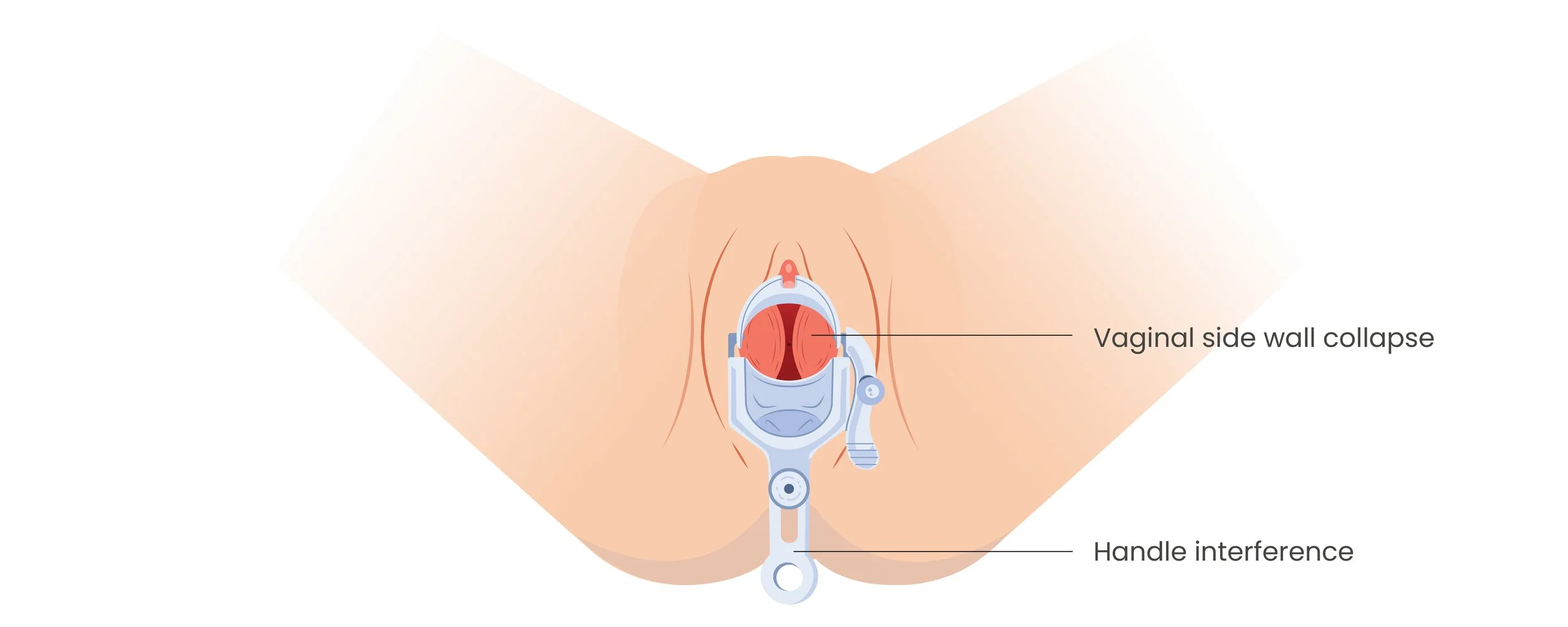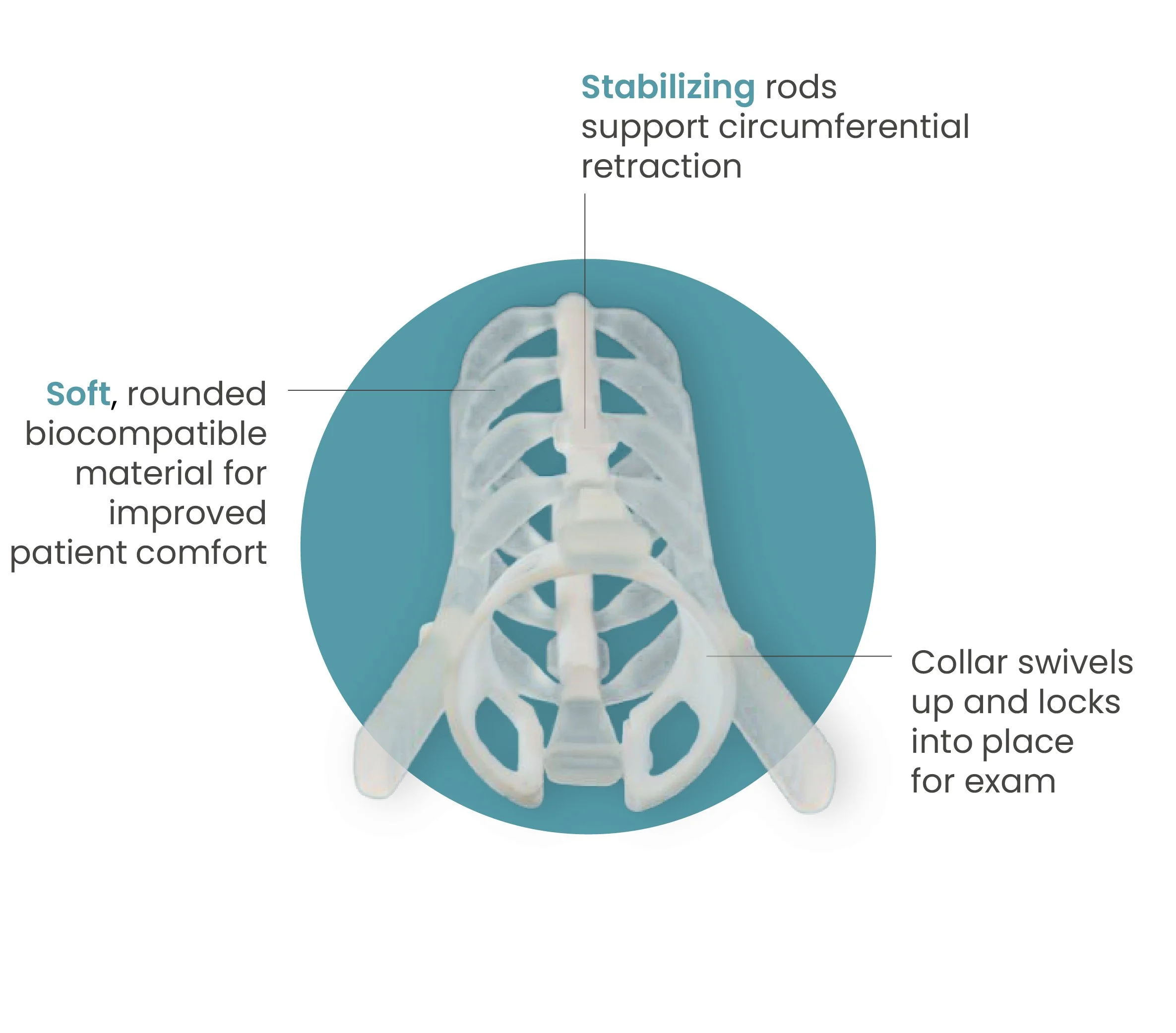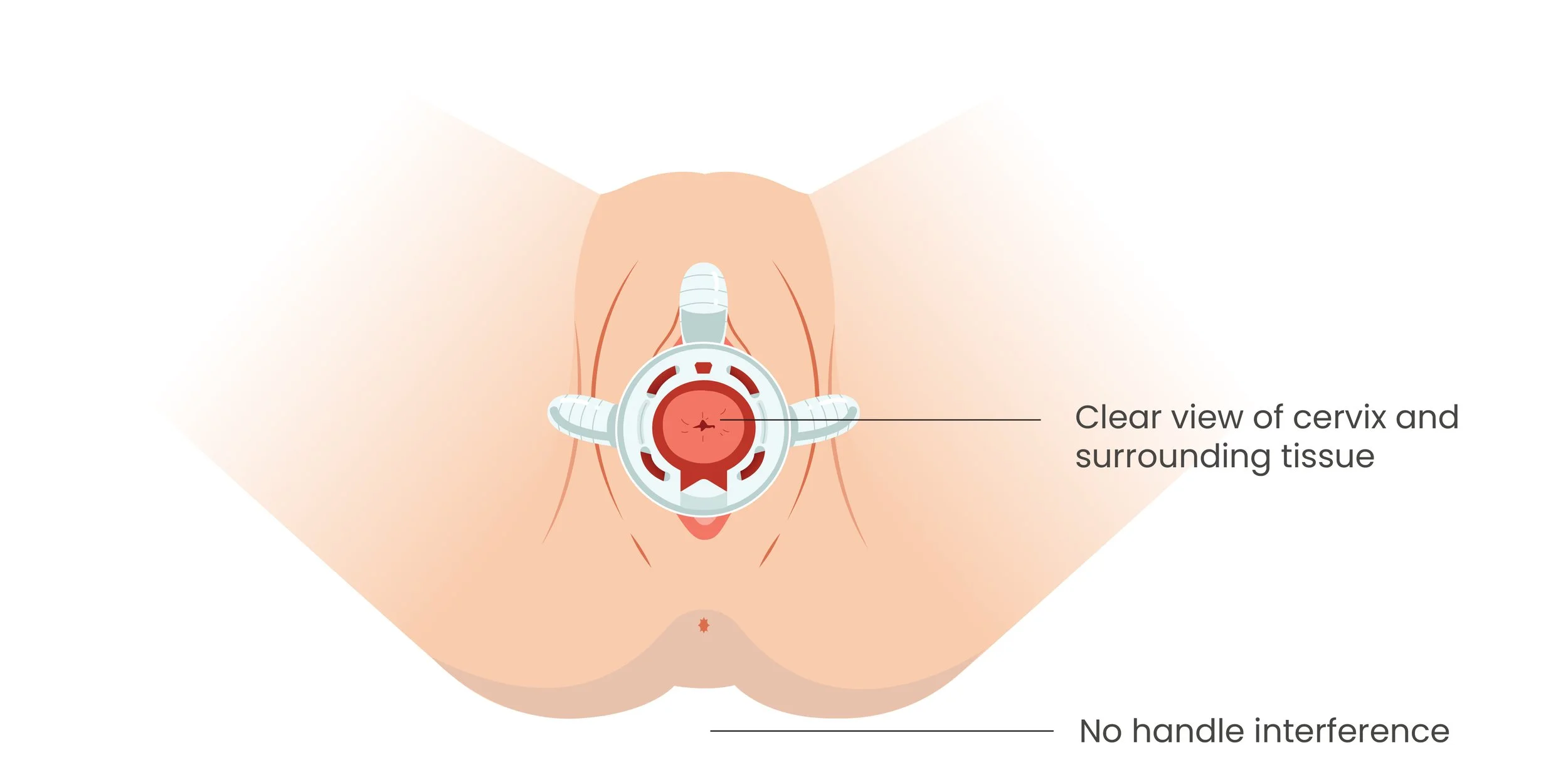
Redefining Pelvic Exams for Improved Healthcare
Routine pelvic exams are recommended for early detection and treatment of gynecological conditions such as endometriosis and polycystic ovarian syndrome (PCOS). It is also used to detect various types of cancers and infections, as well as maintain a healthy reproductive system. Sadly, nearly 90% of women dread the pelvic exam¹. The most common reported reason for this is the discomfort associated with the current vaginal speculum.
(References 2-5)
Antiquated Design
Women and providers are very familiar with the current “problem”: A 2-bill design dating back to ancient times, typically made of stainless steel and more recently plastic. This archaic design significantly limits provider care and patient comfort.
Limited Visualization
With only anterior and posterior retraction, the providers’ visualization and access to anatomy is limited due to collapse of the lateral vaginal walls.
Patient Discomfort
Speculum design, material, and procedure often cause pain, discomfort and tearing of the vaginal opening or surrounding tissue.
Poor Ergonomics
The current speculum design often positions the handle against the patient’s anatomy and/or the table, complicating the exam. The design also prevents patient self-placement.
Current speculum showing vaginal side wall prolapse obstructing the view of the cervix during exam.
93% of clinicians report visualization of the cervix is challenging in overweight & obese patients⁶ and if this issue were resolved, up to 20% of cervical cancers in these patients could be prevented⁷.
MVI has reimagined the vaginal speculum to provide improved care and comfort for patients and providers so scoot down this page to learn more about the innovative Rosa Spec™.
Introducing the Rosa Spec™: Redefining Pelvic Exams for Improved Healthcare
The Rosa Spec offers a 360 degree treatment plane through its circumferential design.
Improved Comfort
The Rosa Spec utilizes a soft, light biocompatible material and offers a small initial diameter to minimize patient discomfort during insertion. The handle-free and sleek design also allows for a self-insertion option.
Improved Care
MVI’s patented Rosa Spec™ is capable of providing an unobstructed view of the cervix by effectively eliminating tissue prolapse with a fully circumferential design that offers a 360° treatment plane. As a single-use, disposable device, Rosa Spec minimizes the potential risk of infection presented by re-used speculums.
Patient and Provider Reviews
“You can see the cervix clearly, excellent!”
“I would use this on all my obese patients”
“I know I have prolapse, can you get this to my doctor now?”
“I’ve been placing tampons since I was 12, I would love to be able to control speculum placement”
References:
1: “New Findings from obp Expose the “Uncomfortable” Truth in Pelvic Examinations”, BusinessWire, April 30, 2019; Accessed December 17, 2024
2. Bridget Glomski, M.D., Hannah Miller, M.D., Mayo Clinic Press Editors, “You hate them, but know you need them. Making a pelvic exam more tolerable”, Mayo Clinic Press, May 31, 2024; Accessed December 17, 2024
3. Rachel Grumman Bender, “Why are pelvic exams so uncomfortable? And why hasn't the speculum been updated in 170 years? Ob-gyns explain.”, Yahoo!Life, Updated January 18, 2023; Accessed December 17, 2024
4. @the.happy.pelvis (July 25, 2021). [Graphic of legs and text stating “Inserting the speculum yourself can help you feel more comfortable with the experience, especially if trauma is present”]. Retrieved from https://www.instagram.com/p/CRwbsUxMZR6/?igsh=ZGUzMzM3NWJiOQ%3D%3D&img_index=4
5. Chloe Kent, “Does the vaginal speculum need a redesign?”, Medical Device Network, September 10, 2020; Accessed December 17, 2024
6. Clarke, Megan A. PhD, Massad, L. Stewart MD, et al, “Challenges Associated With Cervical Cancer Screening and Management in Obese Women: A Provider Perspective”, Journal of Lower Genital Tract Disease, 24(2):p 184-191, April 2020. | DOI: 10.1097, Accessed December 17, 2024
7. Megan A. Clarke, Barbara Fetterman, et al, “Epidemiologic Evidence That Excess Body Weight Increases Risk of Cervical Cancer by Decreased Detection of Precancer”, Journal of Clinical Oncology, Volume 36, Number 12 https://doi.org/10.1200/JCO.2017.75.3442 , Accessed December 17, 2024
Hormone replacement therapy, Hormones, Uterine cancer, Cervical cancer, Menopause, Daughters, Period, Menstrual cycle, Sneeze-pee, IUD, Pelvic floor rehab, Endometrial biopsy, Heavy cycle, Incontinence







